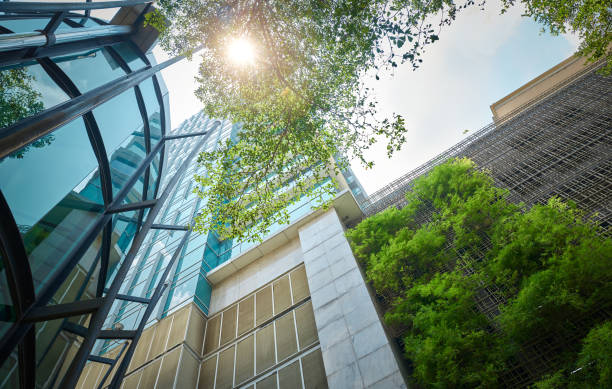
Benefits of Green Buildings for Cities in Modern World
In today’s rapidly urbanizing world, the benefits of green buildings for cities have become increasingly prominent. As cities grow, the demand for sustainable, eco-friendly structures becomes ever more pressing. These buildings not only reduce the environmental impact of urban development but also offer numerous advantages to city dwellers, promoting healthier living environments and more efficient resource use.

Understanding Green Buildings
Green buildings are structures designed to minimize their environmental impact through energy efficiency, sustainable materials, and innovative design. They aim to create healthy indoor environments while reducing waste and pollution. The principles of green building can be integrated into both new constructions and the renovation of existing structures.
Key Features of Green Buildings
Key features of green buildings include energy efficiency, water conservation, and the use of renewable energy sources. Additionally, they often utilize recycled materials and focus on improving indoor air quality. These elements contribute to the overall sustainability of a building.
Environmental Benefits of Green Buildings
The environmental benefits of green buildings are numerous. By reducing energy consumption, they help lower greenhouse gas emissions. This is crucial in the fight against climate change. Moreover, green buildings often incorporate water-saving technologies, which are vital for conserving water in urban areas.
Reducing Carbon Footprint
One of the primary benefits of green buildings is their ability to reduce a city’s carbon footprint. By utilizing renewable energy sources such as solar and wind, green buildings significantly cut down on the use of fossil fuels. This reduction in energy consumption leads to fewer carbon emissions, making cities more sustainable.
Economic Advantages
Green buildings offer substantial economic benefits. Although the initial investment may be higher, these buildings often result in lower operating costs over time. Energy-efficient systems reduce utility bills, and the use of durable materials can decrease maintenance costs.
Boosting Property Values
The incorporation of sustainable practices in building design can enhance property values. As more people become environmentally conscious, the demand for eco-friendly buildings increases. This trend can lead to higher resale values and a competitive edge in the real estate market.
Social Impact and Health Benefits
The social impact of green buildings on city residents is profound. These structures often provide healthier indoor environments due to improved air quality and natural ventilation. This can lead to better health outcomes for occupants, reducing the incidence of respiratory illnesses.
Improving Quality of Life
By creating healthier living spaces, green buildings contribute to an improved quality of life. The use of natural light and ventilation can enhance mood and productivity, making these spaces more pleasant and conducive to well-being.
Green Buildings and Urban Planning
The integration of green buildings into urban planning is essential for creating sustainable cities. These buildings play a crucial role in reducing the environmental impact of urbanization and can be a key component of comprehensive city planning initiatives.
Supporting Sustainable Development
By prioritizing the construction of green buildings, cities can support sustainable development goals. This approach aligns with global efforts to create more livable, resilient urban environments. For more information on sustainable cities, you can visit Sustainable Cities and Communities.
Challenges and Solutions
Despite the numerous benefits of green buildings, challenges remain. High upfront costs and a lack of awareness can hinder their adoption. However, by implementing supportive policies and offering incentives, cities can encourage more widespread use of green building practices.
Overcoming Barriers
To overcome barriers to the adoption of green buildings, it is essential to educate stakeholders about their long-term benefits. Incentives such as tax breaks and grants can also make these projects more financially viable.
Conclusion
In conclusion, the benefits of green buildings for cities are vast and impactful. By adopting eco-friendly construction practices, cities can reduce their environmental impact, boost their economies, and improve the quality of life for their residents. As urbanization continues, the role of green buildings in creating sustainable cities will become increasingly critical. For more insights into innovative building designs, visit Innovative Housing Designs.

FAQs
What is a green building?
A green building is a structure designed to be environmentally responsible and resource-efficient throughout its lifecycle, from design to construction, operation, and demolition.
How do green buildings benefit cities economically?
Green buildings reduce operating costs through energy and water efficiency, increase property values, and boost economic development by creating green jobs.
What are some challenges in adopting green buildings?
Challenges include higher initial costs, a lack of awareness and education, and the need for supportive policies and incentives to encourage adoption.
This article contains affiliate links. We may earn a commission at no extra cost to you.